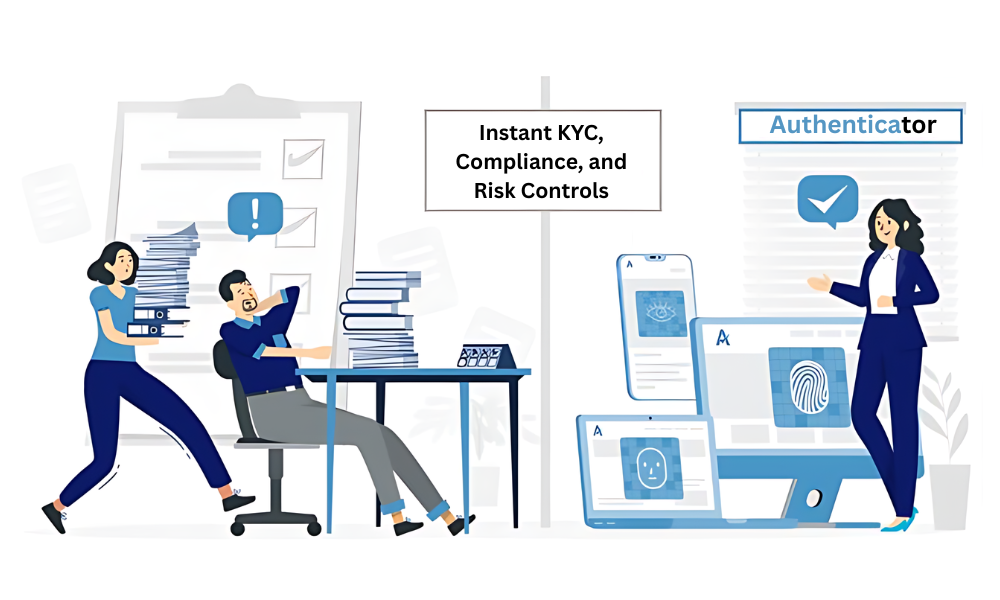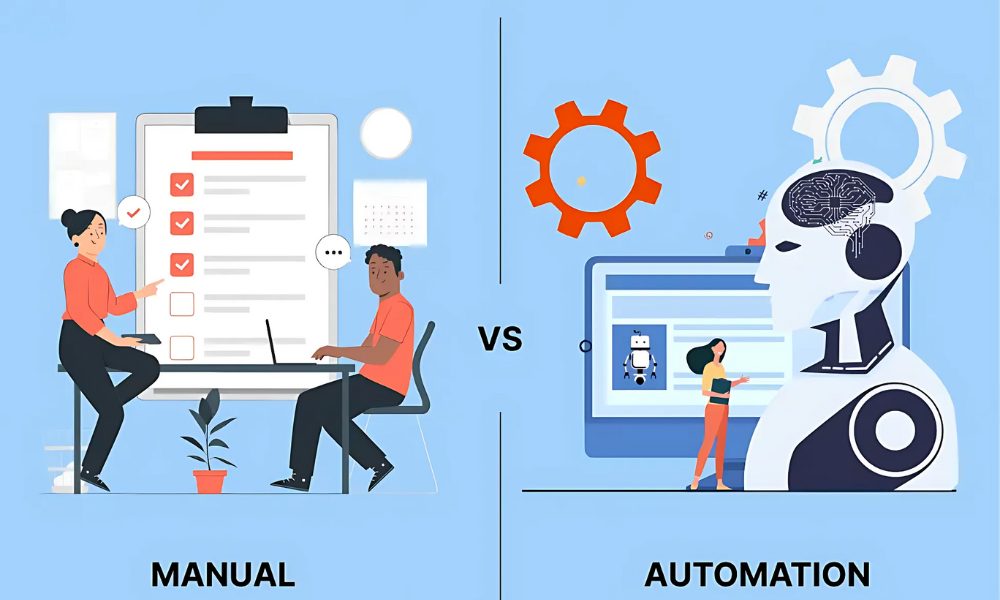
How One Lender Scaled to 50,000 Loans—And How You Can Too
Below is your blog with selective emphasis added. I’ve bolded key benefits, outcomes, and feature phrases to improve skimmability and highlight value for decision-makers. I also added a short “Follow-up” note at the end.
See How Our Client Scaled from 1,000 to 50,000 Loans Using Grin Technologies Loan Management Software
See how our client scaled from 1,000 to 50,000 loans using Grin Technologies loan management software. Learn the exact strategy, automations, and features—LOS-LMS, eKYC, eNACH, underwriting, EMI, and collections—that powered fast, compliant growth.
See How Our Client Scaled from 1,000 to 50,000 Loans Using Grin Technologies Loan Management Software
Introduction
Scaling a lending business isn’t just about disbursing more money—it’s about building a reliable, compliant, and automated lending engine. In this case study, we break down how our client scaled from 1,000 to 50,000 loans using Grin Technologies loan management software. By streamlining loan origination, automating underwriting and disbursement, and tightening collections with real-time analytics, they achieved rapid growth without losing control over risk or compliance. If growth, speed, and control are the goals, this journey shows exactly how to get there.
Why Scaling Lending Breaks Most Systems
When lenders try to scale, the bottlenecks appear fast:
- Manual processes across LOS and LMS lead to delays and errors.
- Fragmented systems for KYC, underwriting, disbursement, and collections create data silos.
- Lack of dashboard-level visibility makes it hard to track NPAs, risk cohorts, or portfolio health.
- Compliance tasks like KYC, eNACH mandates, and audit trails become time-consuming and risky.
- Customer experience suffers when EMI reminders, repayment links, and support aren’t automated.
Our client faced exactly these hurdles at 1,000 loans. The turning point came when they moved to a unified, end-to-end lending stack with Grin Technologies.
The Strategy:
Replace Manual Steps with a Unified, Automated Lending Stack
The core idea was simple: centralize everything from lead to closure in one ecosystem and automate decision-making wherever possible.
1) End-to-End Loan Origination (LOS) to Loan Management (LMS)
Grin’s LOS-LMS integration eliminated handoffs:
- Lead capture to disbursal on a single workflow.
- Pre-configured product templates for personal loans, business loans, and microfinance.
- Rule-based checks for KYC, income proof, and document verification.
- Instant decisioning for pre-approved segments.
Result: Application TAT dropped from days to hours, then minutes for repeat customers.
2) Instant KYC, Compliance, and Risk Controls
Compliance was baked into the process:

- eKYC, CKYC, PAN/Aadhaar validation, and bureau checks integrated into onboarding.
- Automated eNACH/eMandate setup for EMI collection.
- Audit logs and permissioned access for internal and external audits.
- Policy engine to auto-reject high-risk profiles and flag suspicious activity.
Result: Fewer manual interventions, stronger risk posture, faster approvals.
3) Data-Driven Underwriting and Credit Decisioning
Using scorecards, income analysis, and bureau data, the client adopted tiered underwriting:
- Segment-based limits, pricing, and tenure rules.
- Alternate data signals for thin-file and new-to-credit customers.
- Automated DTI and FOIR checks.
- Manual override option with complete justification trail.
Result: Better portfolio quality with higher approval speed.
4) Disbursement Automation and Bank Integrations
Disbursements moved from batch-based to real-time:
- Maker-checker approvals with role-based access.
- UPI/IMPS/NEFT disbursal rails with reconciliation.
- Auto-ledgering and accounting entries synced with the core LMS.
Result: Faster customer delight and cleaner books with minimal mismatch.
How They Got to 50,000 Loans:
The Execution Playbook
The technology unlocks the potential—but execution makes it scale.
Step 1: Standardize Product Policies
- Define loan products with fixed ranges for ticket size, tenure, and interest.
- Create eligibility matrices per segment (salaried, self-employed, micro-business).
- Align pricing with risk buckets to protect NIM and reduce defaults.
Step 2: Automate the Customer Journey
- Pre-fill repeat applications using borrower profiles.
- Auto-trigger verification and bureau pulls at the right step.
- Use SMS/WhatsApp/email for OTPs, eMandates, and document reminders.
- Provide self-serve borrower portals for statements, EMIs, and support.
Step 3: Tighten Collections Before They Get Hard
- Smart dunning workflows (soft to hard) with promises-to-pay tracking.
- Payment links, UPI handles, and auto-retry for failed mandates
- Early warning indicators (EWI) for missed calls, change in income signals, or broken PTP.
- Field collections app for on-ground teams with geo-tagging and receipts.
Step 4: Monitor with Real-Time MIS and Cohort Analytics
- Dashboards for disbursals, PAR/DPD buckets, roll rates, and NPA trends.
- Cohort analysis by source, geography, and product to refine underwriting.
- Daily reconciliation reports and exception alerts.
- Investor- and board-ready reports in one click.
What Changed: Before vs After Grin Technologies Loan Management Software

- Turnaround Time: From 48–72 hours to <2 hours for most cases; instant for repeat customers.
- Approval Rate: Increased through segmented underwriting and alternate data usage.
- Cost per File: Dropped via automation, fewer manual checks, and fewer errors.
- Collection Efficiency: Improved with eNACH mandates, smart dunning, and digital payments.
- Compliance Confidence: Strong audit trails, secure data, and standardized flows.
- Customer Experience: Smooth onboarding, clear EMI schedules, and self-service access.
Real-World Outcomes from 1,000 to 50,000 Loans
Here’s how the growth translated on the ground:
- Scale with Control: The team handled 50x volume without 50x headcount thanks to automation-first workflows.
- Improved Portfolio Health: Standardized policies and data-driven underwriting reduced delinquency and improved early bucket performance.
- Faster Revenue Realization: Quicker disbursals and better collection efficiency improved cash flows and reduced slippage.
- Better Brand Trust: Faster approvals, transparent schedules, and seamless support drove repeat borrowing and referrals.
Why Grin Technologies Loan Management Software Was the Right Fit
Grin’s platform is built for Indian lenders, NBFCs, microfinance institutions, and fintech’s that need:
- End-to-end LOS + LMS in one place.
- Native integrations for eKYC, bureau, eNACH, and disbursement gateways.
- Configurable rule engines for underwriting, pricing, and workflows.
- Strong MIS, cohort analytics, and audit-grade reporting.
- Role-based access, multi-branch support, and maker-checker controls.
- Cloud-based scalability with enterprise security.
Implementation Timeline and Best Practices
- Weeks 1–2: Product setup (loan templates, interest models, charges, schedules).
- Weeks 3–4: Integrations (KYC, bureau, eNACH, bank rails) and UAT.
- Weeks 5–6: Team training, go-live in one business unit, monitor, optimize.
- Weeks 7+: Scale across branches/partners, refine rules, add new products.
Best practices:
- Start with your highest-volume product and cleanest data.
- Use cohort reports weekly to refine underwriting cut-offs.
- Automate borrower communications from day one.
- Maintain a strong maker-checker culture for critical actions.
Conclusion:
Ready to Scale Your Lending from 1,000 to 50,000 Loans?
This transformation was possible because technology, workflows, and risk policies were aligned around one objective: scale with speed and control. By adopting Grin Technologies loan management software, our client automated the lending lifecycle—LOS to LMS, underwriting to disbursement, EMI to collections—while staying compliant and data-driven. If the goal is to 10x–50x loan book growth without compromising portfolio quality, this playbook works.
Want to see how this can work for your NBFC or fintech? Book a demo of Grin Technologies loan management software and get a tailored growth plan—complete with LOS-LMS setup, eKYC/eNACH integration, risk rules, and collections workflows. Let’s build your lending engine for the next 50,000 loans.
Follow-up
- Would you like this formatted as a CMS-ready draft with meta title/description, OG tags, and FAQ schema?
- I can also convert this into a downloadable PDF case study and a LinkedIn carousel.



